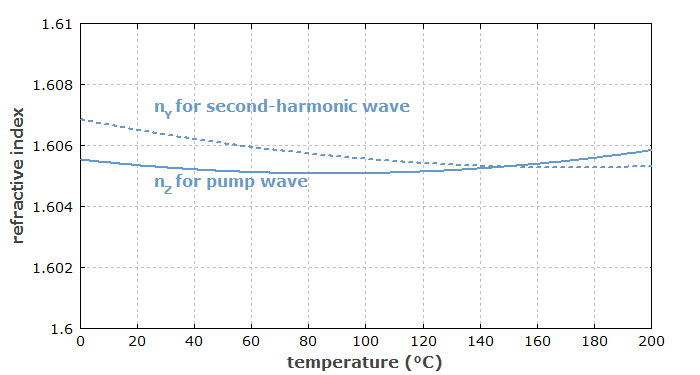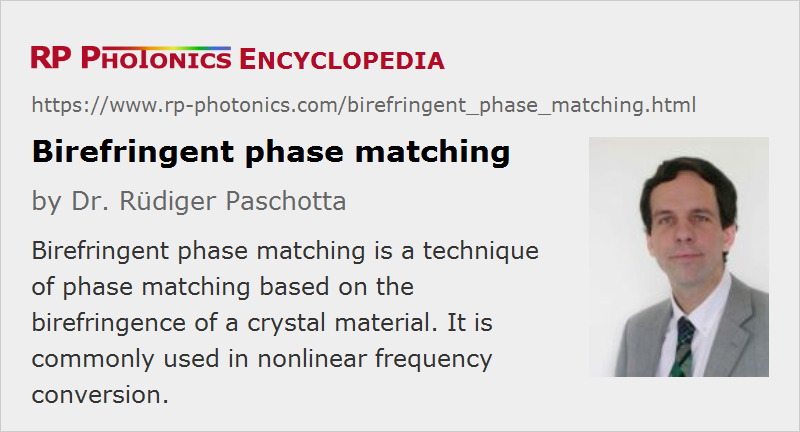Birefringent Phase Matching
Definition: a technique of phase matching based on the birefringence of a crystal material
More general term: phase matching
German: Phasenanpassung durch Doppelbrechung
How to cite the article; suggest additional literature
Author: Dr. Rüdiger Paschotta
Birefringent phase matching is a technique for achieving phase matching of a nonlinear process by exploiting the birefringence of a nonlinear crystal. For example, the process of frequency doubling of a 1064-nm beam in a lithium niobate (LiNbO3) crystal can be phase-matched by using the ordinary polarization for the pump beam and the extraordinary polarization for the second-harmonic beam. When the appropriate crystal temperature is set, the birefringence just cancels the chromatic dispersion. The dispersion alone would normally lead to the higher refractive index for the second-harmonic light, so that phase matching would not be possible.

The common forms of birefringent phase matching are
- noncritical phase matching with beam propagation along an axis of the index ellipsoid (see Figure 1)
- critical phase matching where the angle dependence of the extraordinary refractive index is exploited.
Another distinction refers to the involved polarization states:
- For type-I phase matching, signal and idler (or the two input waves for frequency doubling or sum frequency generation) have the same polarization.
- For type-II phase matching, these waves have orthogonal polarization states.
(In the literature, some other definitions occur occasionally.)
A common alternative to birefringent phase matching is quasi-phase matching (QPM).
Questions and Comments from Users
Here you can submit questions and comments. As far as they get accepted by the author, they will appear above this paragraph together with the author’s answer. The author will decide on acceptance based on certain criteria. Essentially, the issue must be of sufficiently broad interest.
Please do not enter personal data here; we would otherwise delete it soon. (See also our privacy declaration.) If you wish to receive personal feedback or consultancy from the author, please contact him e.g. via e-mail.
By submitting the information, you give your consent to the potential publication of your inputs on our website according to our rules. (If you later retract your consent, we will delete those inputs.) As your inputs are first reviewed by the author, they may be published with some delay.
See also: quasi-phase matching, phase matching, nonlinear frequency conversion
and other articles in the category nonlinear optics
 |











If you like this page, please share the link with your friends and colleagues, e.g. via social media:
These sharing buttons are implemented in a privacy-friendly way!